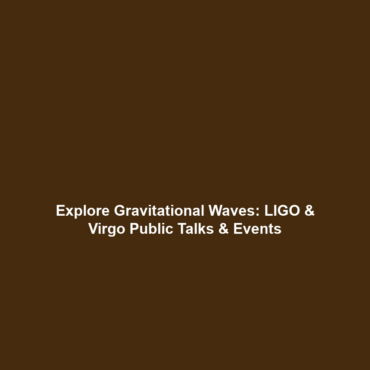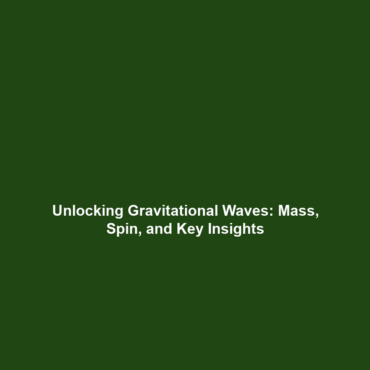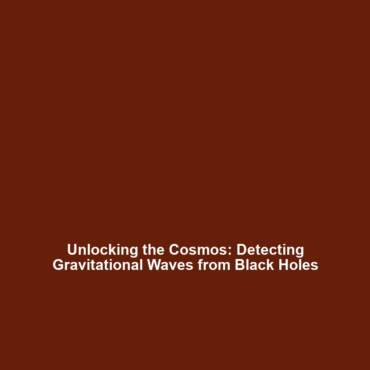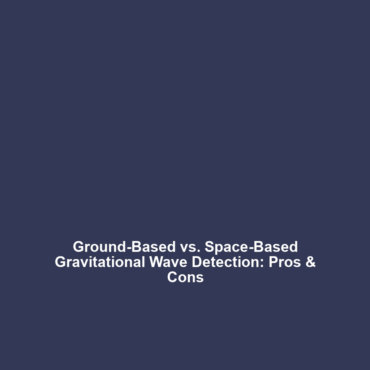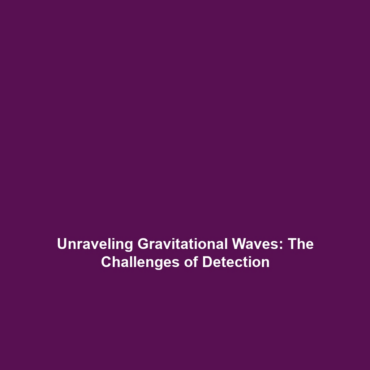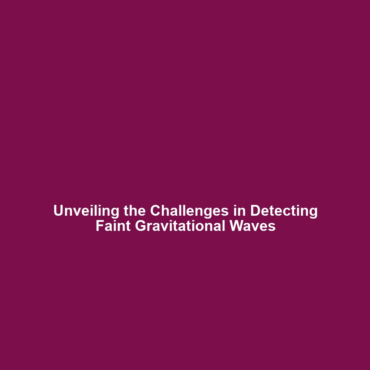Public Talks, Exhibitions, and Online Resources from LIGO and Virgo
Introduction
Public engagement is crucial in the field of gravitational waves, as it not only expands awareness but also fosters a deeper understanding of the scientific phenomena involved. Organizations such as LIGO (Laser Interferometer Gravitational-Wave Observatory) and Virgo have developed a range of public talks, exhibitions, and online resources designed to educate and inspire. These initiatives are significant as they bridge the gap between complex scientific concepts and public comprehension, further solidifying the importance of gravitational wave research.
Key Concepts
The understanding of gravitational waves has fundamentally shifted our comprehension of the universe. Here are some major concepts related to the public outreach activities of LIGO and Virgo:
Public Talks
Public talks hosted by LIGO and Virgo are designed to demystify the intricacies of gravitational waves. Experts frequently discuss how these waves were first detected and their implications for astrophysics.
Exhibitions
Traveling exhibitions showcase interactive displays that explain the technology behind gravitational wave detection and the science of astrophysics, making these topics accessible to people of all ages.
Online Resources
LIGO and Virgo provide various online educational materials, including videos, articles, and webinars that explore gravitational waves. These digital tools are essential for reaching a global audience.
Applications and Real-World Uses
Public talks, exhibitions, and online resources promote understanding of how gravitational waves are studied and their impact on various fields. Here are some significant applications:
- Educational Outreach: Increased public interest in science through interactive talks and exhibitions enhances STEM education.
- Community Engagement: Local communities are engaged through science festivals and workshops, allowing participants to explore gravitational wave science hands-on.
- Scientific Collaboration: By fostering public interest, organizations encourage collaboration across various scientific disciplines, enhancing research in gravitational waves.
Current Challenges
Despite their efforts, LIGO and Virgo face several challenges in public outreach:
- Complexity of Concepts: Gravitational waves involve complex scientific principles that are often not easily digestible for the general public.
- Resource Limitations: Funding constraints can limit the scope of public outreach programs and exhibitions.
- Technological Accessibility: Not all potential participants have access to the necessary technology to engage with online resources.
Future Research and Innovations
The future of public engagement related to gravitational waves looks promising with several innovations on the horizon:
- Enhanced Virtual Reality Experiences: Future exhibitions may incorporate VR technologies to immerse audiences in gravitational wave phenomena.
- Expanded Global Webinars: More frequent online seminars are planned to discuss the latest research and discoveries in the field.
- Collaborative Projects: New partnerships with schools and educational organizations aim to develop curricula surrounding gravitational waves.
Conclusion
Public talks, exhibitions, and online resources from LIGO and Virgo play a pivotal role in enhancing public understanding of gravitational waves. These initiatives help demystify complex scientific concepts and encourage community engagement. As we look toward the future, it is essential to support these educational endeavors to promote a well-informed society in the realm of astrophysics. For more information, visit LIGO’s official website or explore Virgo’s resources.
